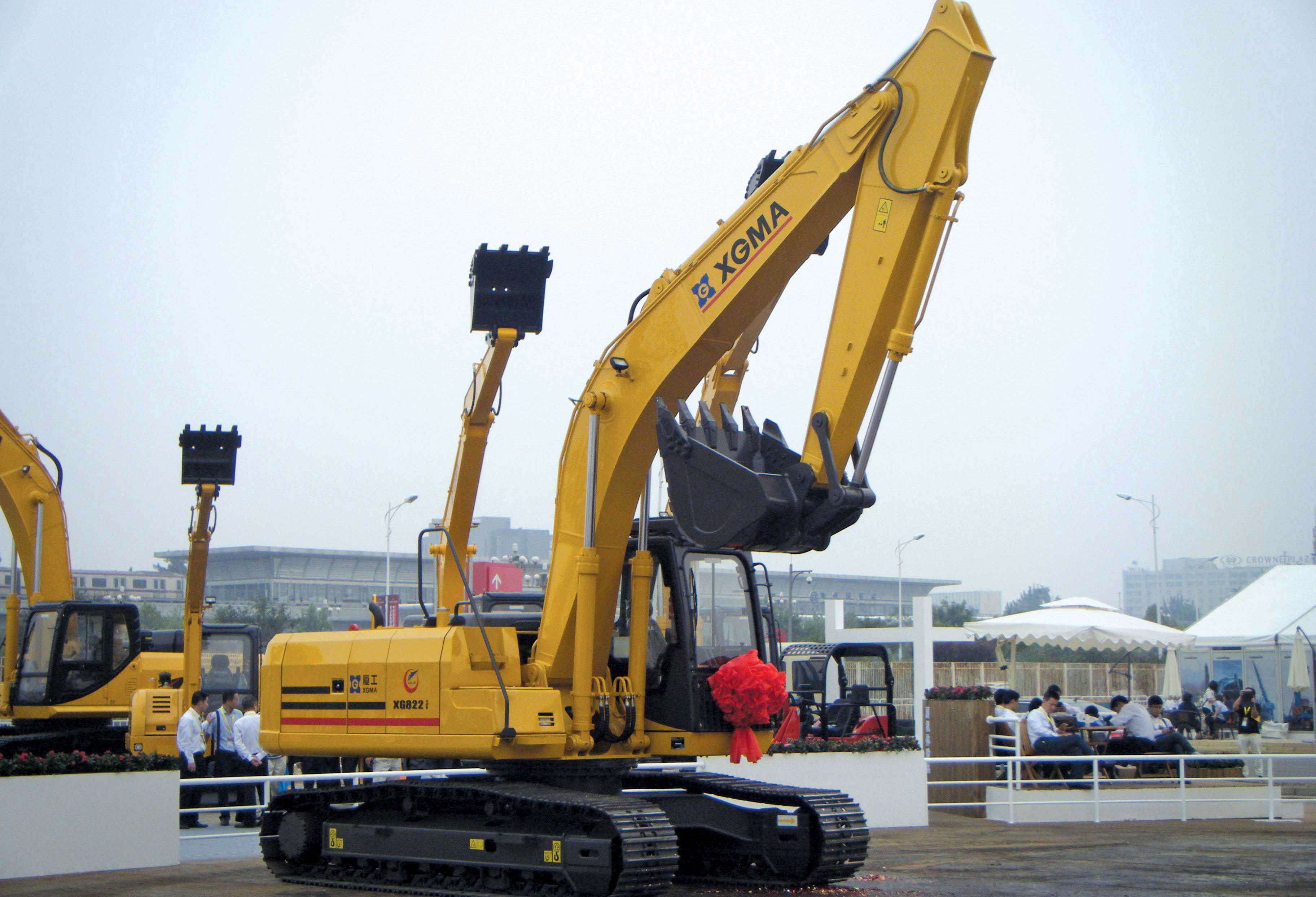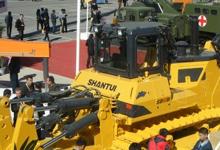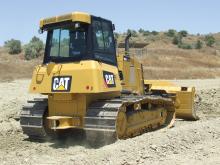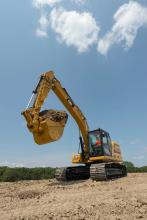Chinese firms LiuGong, Shantui, Sunward and XCMG revealed innovative earthmoving concepts at BICES 2015 – Mike Woof writes. Of the many new machines seen at the recent BICES 2015 construction equipment exhibition in Beijing, a number of firms were notable for their innovations. LiuGong, Shantui, Sunward and XCMG all offered particular developments in earthmoving technology that stood out from the array of more conventional equipment. All of these firms also showed more standard machines, as did other rivals

A novel remote control system is being developed by XGMA for use with its excavators
Chinese firms LiuGong, Shantui, Sunward and XCMG revealed innovative earthmoving concepts at BICES 2015 – Mike Woof writes
Of the many new machines seen at the recent2730 BICES 2015 construction equipment exhibition in Beijing, a number of firms were notable for their innovations. 269 LiuGong, 1171 Shantui, 1173 Sunward and 2490 XCMG all offered particular developments in earthmoving technology that stood out from the array of more conventional equipment. All of these firms also showed more standard machines, as did other rivals Sinomach, 5316 SDLG and 2713 XGMA.
Perhaps the most important launches from LiuGong are for the firm’s 890H wheeled loader and 950 excavator. Weighing in at 30.6tonnes, the 890H loader offers a bucket load capacity of 9tonnes and strengthens the firm’s range in this market segment. Power comes from a196 Cummins diesel rated at 261kW and which runs at low speed to reduce fuel consumption. The firm says that the engine is matched to its ZF automatic, electro-hydraulic transmission and that this further lowers fuel consumption while ensuring traction in poor conditions. Also new for the 890H is its revised cab, as well as better access for maintenance due to grouped service points and a wide opening engine canopy.
Meanwhile the 46.5tonne, 298kW CLG950E excavator was developed using the firm’s new Product Lifecycle Management (PLM) platform in accordance with the LiuGong Development Process (LDP). The machine features sophisticated components and has advanced technologies according to LiuGong.
SDLG says it is working on upgrades to its models to ensure that they will meet the latest Chinese emissions requirements. These machines will also be available for sale to emergent territories. While specifics of the upgrades have yet to be released, the firm said that the machines will have reinforced structures so that they cope better with tough working environments and have longer working life. Engines meanwhile will meet the latest emissions requirements, while also being more powerful, responsive and fuel-efficient. The latest wheeled loader and excavator models are being sold both in China and for export, with key overseas markets being the Middle East and Latin America according to the firm.
Shantui has diversified its product line away from its reliance on bulldozers and the firm now offers a much wider range, including earthmovers, concrete machines and road equipment. However at BICES 2015, the company’s new launches were for bulldozers. The company unveiled four new machines, the SD16YS, DE17R, DH17 and SD20-5NLG.
The SD16YS is a fully hydraulic bulldozer weighing 17.44tonnes that is designed for use in low ground pressure applications. Power comes from a Cummins QSB6.7 diesel rated at 120kW, with variants available in either Tier 3 or Tier 4 Interim emissions ratings. Dual circuit hydraulics are said to ensure responsive performance and the system is load-sensing to optimise power delivery and fuel economy. Ground pressure is 34.3kPa and the machine has 810mm-wide track plates. The power angle/tilt blade measures 3.86m wide by 1.2m high and offers a working capacity of 4.4m3. The cab design is said to offer good all-round visibility and low operating noise, as well as having shock absorbing mounts to minimise vibration.
The same cab design is used in the DH17 bulldozer, which weighs in at 17.5tonnes and has power from a2731 Weichai diesel rated at 127kW, which meets the China III non-road emissions regulations (broadly equivalent to Tier 3). This machine is a conventional bulldozer aimed at use in developing markets. The DH17 is fully hydraulic, again with the firm’s latest dual circuit, load-sensing technology for high power output and efficient operation. It is manoeuvrable despite its size and has a small turning circle, allowing it to operate on sites with comparatively restricted working space. Ground pressure is 64kPa and the machine has 510mm wide track plates. The semi-U blade is 3.4m-wide by 1.2m high and offers a working capacity of 4.4m3.
A special variant of the DH17 is the DE17R, a remote controlled bulldozer that uses technology developed in-house by Shantui. The novel machine has been developed to allow safe working on dangerous sites where an operator on board might be at risk from the conditions. The remote system allows the machine to be operated at distances of up to 500m, with an array of four ruggedised cameras mounted on the roof as well as sensor equipment and positioning technology from265 Leica Geosystems. This technology allows the operator a good all-round view of the working area as the machine is in use. As with the standard model, power comes from a Weichai diesel rated at 127kW, again meeting the China III non-road emissions regulations. This is a low ground pressure machine with track shoes up to 1.1m wide and a working weight of 19.3tonnes and can be used in soft ground conditions where the conventional model would bog down.
Moving up in size again is the SD20-5LNG, the first LNG fuelled bulldozer on the market and intended to reduce emissions as well as fuel costs. The gas cylinder is a proven, ruggedised design with systems to monitor status and ensure reliability and safety. The Weichai diesel delivers 149kW and the machine weighs in at 19.9tonnes, while it is equipped with a 3.46m-wide by 1.3m-high straight tilting blade that offers a working capacity of 4.46m3. As with the other new dozers, it has dual hydraulic systems and a cab designed for good all-round visibility and operator comfort.
Sinomach is developing a new range of crawler excavators that range in weight from 6.5tonnes up to 46tonnes. The latest model for this second generation line-up to come to market is the 30tonne class GE300H. This is powered by a Cummins diesel and is said to be more powerful and productive than the firm’s previous model, while also offering better fuel economy. The new excavator series is aimed at the Chinese home market, as well as for export to South East Asia, South America and the Middle East.
A key development for the Sunward excavator line is its innovative SWE385 hybrid excavator. The machine saves hydraulic energy from slewing or boom movements and recirculates this into the system, reducing fuel consumption by up to 30%. The cylinders are also designed so as to maximise output and minimise energy consumption. Weighing in at 38.6tonnes, the machine can be equipped with buckets offering capacities of 1.6-2.6m3 and is powered by a diesel delivering 184kW.
XGMA’s latest innovation is an intelligent control system that allows safe operation of machines remotely. This system is intended for use where machines are running in difficult or dangerous operations that would put an operator at risk. The system is in research and development now and is not yet ready for market but XGMA is keen to highlight this advanced technology to customers. It would be of particular use for markets such as tunnelling, allowing excavators to carry out excavation or scarifying duties where the roof area still requires additional support, without risking an operator. The system can also be used for guiding wheeled loaders when mucking out blasted material from a tunnel face, again ensuring that the operator can remain at a safe distance from the working area.
The company says that the system will be available on the global market within two to three years once it has been fully developed. However, the firm says that this remote control is based on proven technology used already in military applications, which will ensure that it is reliable and robust. The first actual tests of the technology in working sites will be carried out in China next year.
Of the many new machines seen at the recent
Perhaps the most important launches from LiuGong are for the firm’s 890H wheeled loader and 950 excavator. Weighing in at 30.6tonnes, the 890H loader offers a bucket load capacity of 9tonnes and strengthens the firm’s range in this market segment. Power comes from a
Meanwhile the 46.5tonne, 298kW CLG950E excavator was developed using the firm’s new Product Lifecycle Management (PLM) platform in accordance with the LiuGong Development Process (LDP). The machine features sophisticated components and has advanced technologies according to LiuGong.
SDLG says it is working on upgrades to its models to ensure that they will meet the latest Chinese emissions requirements. These machines will also be available for sale to emergent territories. While specifics of the upgrades have yet to be released, the firm said that the machines will have reinforced structures so that they cope better with tough working environments and have longer working life. Engines meanwhile will meet the latest emissions requirements, while also being more powerful, responsive and fuel-efficient. The latest wheeled loader and excavator models are being sold both in China and for export, with key overseas markets being the Middle East and Latin America according to the firm.
Shantui has diversified its product line away from its reliance on bulldozers and the firm now offers a much wider range, including earthmovers, concrete machines and road equipment. However at BICES 2015, the company’s new launches were for bulldozers. The company unveiled four new machines, the SD16YS, DE17R, DH17 and SD20-5NLG.
The SD16YS is a fully hydraulic bulldozer weighing 17.44tonnes that is designed for use in low ground pressure applications. Power comes from a Cummins QSB6.7 diesel rated at 120kW, with variants available in either Tier 3 or Tier 4 Interim emissions ratings. Dual circuit hydraulics are said to ensure responsive performance and the system is load-sensing to optimise power delivery and fuel economy. Ground pressure is 34.3kPa and the machine has 810mm-wide track plates. The power angle/tilt blade measures 3.86m wide by 1.2m high and offers a working capacity of 4.4m3. The cab design is said to offer good all-round visibility and low operating noise, as well as having shock absorbing mounts to minimise vibration.
The same cab design is used in the DH17 bulldozer, which weighs in at 17.5tonnes and has power from a
A special variant of the DH17 is the DE17R, a remote controlled bulldozer that uses technology developed in-house by Shantui. The novel machine has been developed to allow safe working on dangerous sites where an operator on board might be at risk from the conditions. The remote system allows the machine to be operated at distances of up to 500m, with an array of four ruggedised cameras mounted on the roof as well as sensor equipment and positioning technology from
Moving up in size again is the SD20-5LNG, the first LNG fuelled bulldozer on the market and intended to reduce emissions as well as fuel costs. The gas cylinder is a proven, ruggedised design with systems to monitor status and ensure reliability and safety. The Weichai diesel delivers 149kW and the machine weighs in at 19.9tonnes, while it is equipped with a 3.46m-wide by 1.3m-high straight tilting blade that offers a working capacity of 4.46m3. As with the other new dozers, it has dual hydraulic systems and a cab designed for good all-round visibility and operator comfort.
Sinomach is developing a new range of crawler excavators that range in weight from 6.5tonnes up to 46tonnes. The latest model for this second generation line-up to come to market is the 30tonne class GE300H. This is powered by a Cummins diesel and is said to be more powerful and productive than the firm’s previous model, while also offering better fuel economy. The new excavator series is aimed at the Chinese home market, as well as for export to South East Asia, South America and the Middle East.
A key development for the Sunward excavator line is its innovative SWE385 hybrid excavator. The machine saves hydraulic energy from slewing or boom movements and recirculates this into the system, reducing fuel consumption by up to 30%. The cylinders are also designed so as to maximise output and minimise energy consumption. Weighing in at 38.6tonnes, the machine can be equipped with buckets offering capacities of 1.6-2.6m3 and is powered by a diesel delivering 184kW.
XGMA’s latest innovation is an intelligent control system that allows safe operation of machines remotely. This system is intended for use where machines are running in difficult or dangerous operations that would put an operator at risk. The system is in research and development now and is not yet ready for market but XGMA is keen to highlight this advanced technology to customers. It would be of particular use for markets such as tunnelling, allowing excavators to carry out excavation or scarifying duties where the roof area still requires additional support, without risking an operator. The system can also be used for guiding wheeled loaders when mucking out blasted material from a tunnel face, again ensuring that the operator can remain at a safe distance from the working area.
The company says that the system will be available on the global market within two to three years once it has been fully developed. However, the firm says that this remote control is based on proven technology used already in military applications, which will ensure that it is reliable and robust. The first actual tests of the technology in working sites will be carried out in China next year.







